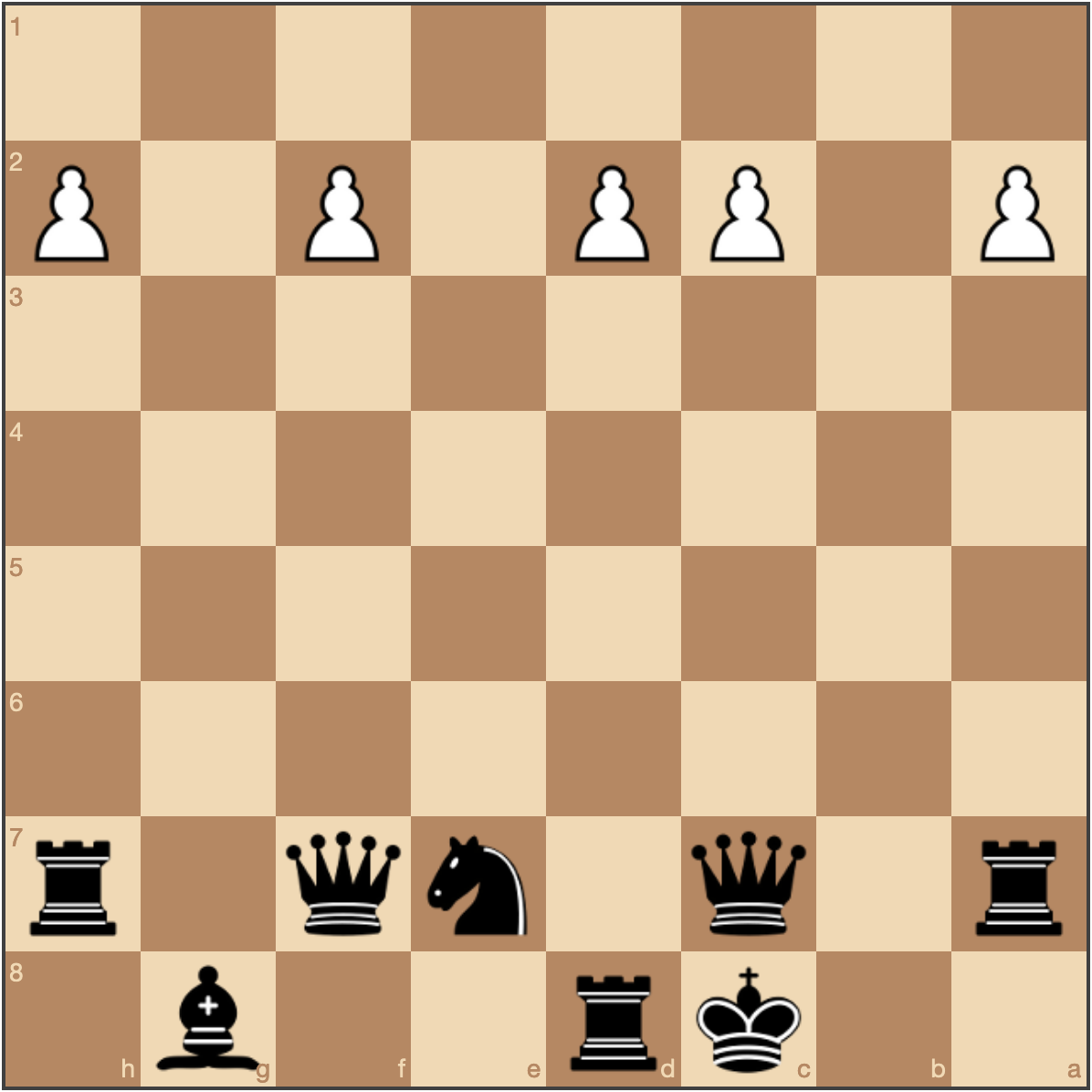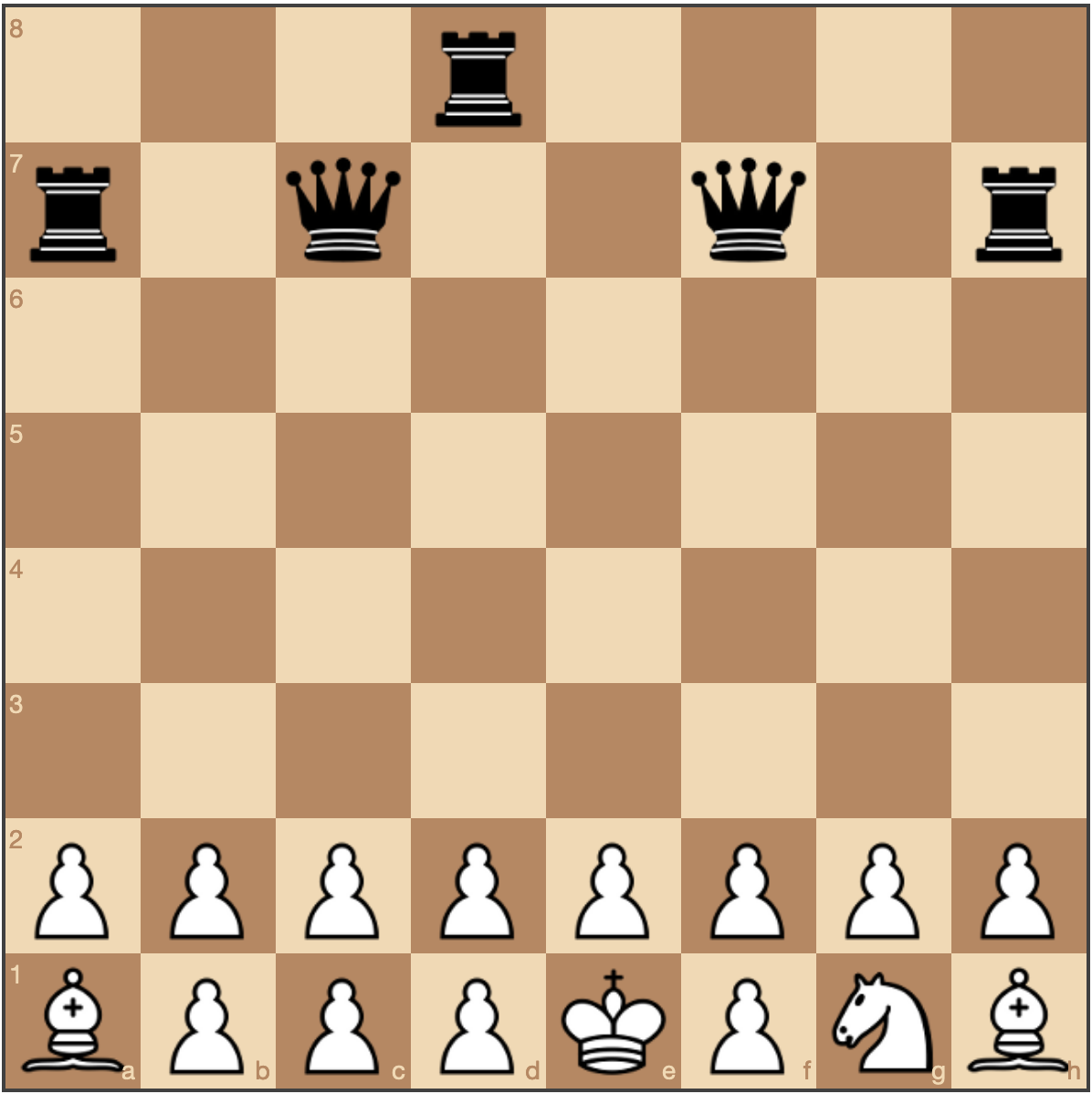

(I Spy – An example board)
Step 1: Setup & Materials
Change your Scenario 1 such that the visibility of the board is limited to a small area around your own pieces. Like before, you can play as both players and focus on one side or play with a friend. If you focus on one side, pick the setup that you felt most comfortable with in Scenario 1.
Keep most of the settings the same as the last scenario, but tinker with some of the following settings related to vision for this go around:
Configuration Mode
| Setting | Description | |
|---|---|---|
| Your Piece Configuration | View Range | “How far in squares can I see?” |
| See Inward Threats | “Which of my pieces are being threatened?” | |
| See Outward Thread | “Which enemy pieces am I threatening?” |
Step 2: Design & Build
Design an “I Spy” scenario that exemplifies the idea of fog of war, where the “two players” have different levels of visibility. For example, one player has better visibility of incoming threats and the other player has better visibility of outgoing threats. You can also vary the visibility differently based on what you think you will learn more from.
As well, one side may have really good technology to hide from the enemy so they can see everything, while the enemy cannot see anything. Build the board to represent your desired scenario. Although you will act as both players, choose one side to focus on and find an effective strategy with this setup.
Step 3: Evaluate & Reflect
Repeat the match from Scenario 1, but with this incomplete information setup. As you play, think about which strategies are working well and also what is challenging about the arrangement. In particular:
- How did your tactics change now that you had less information available?
- Did adding fog of war make your team’s composition easier or harder to work with? Why?
- How did your strategy change over the course of the game? What was your thought process when you had to switch up your tactics?
In the next scenario, we ask that you apply these takeaways to a new scenario of your own design. This means that you will get to choose what variables you prioritize and what questions you want to answer.










